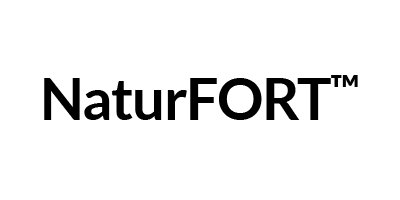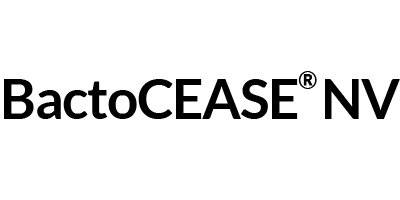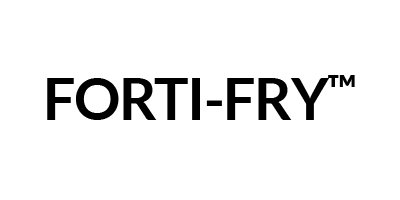Will cultured meat and plant-based protein alternatives disrupt the food industry?
In the past few years, we witnessed awareness pushing consumer trends towards healthy, plant-based and label-friendly products, but also protein alternatives for meat are on the rise. For us at Kemin, this means observing these trends closely and react rapidly, as many of our customers are also adapting in order to meet the consumer expectations. “At Kemin we have a range of high-quality products suitable for alternative protein sources, but we continue investing in studies to refine our range of products and tackle the challenges these new food trends present us.”
It’s not that the concept of imitation meat is anything new. But with the arrival of ‘clean’ meat and the increased popularity of plant-based alternatives, our attitudes towards meat consumption are changing. For several reasons, more people become vegetarian, vegan or flexitarian; consumers are continuing to seek substitutes for meat and brands and retailers are making these alternatives easier to find. On top of that, major food companies are investing in lab-grown meat and products coming from plant-based protein sources.
As an established player In the Industry, we cannot neglect these emerging markets. We see many Kemin customers do the same. Therefore, it’s to be assumed the traditional meat market will get more fragmented because of this shift and innovative companies offering meatless alternatives will take more market share over time. But it won’t happen overnight.
“Make the world more sustainable every step of the way”
Flexitarians and protein blends
Especially flexitarianism is booming as many consumers consciously want to cut down on the amount of meat they are eating, and many alternatives offer a taste of meat, while having the nutritional benefits coming from plants. And today, we see alternatives ranging from plant-based milks to burgers and cheeses. Some manufacturers even aim exclusively at the flexitarian market with products consisting of both animal and plant proteins. Closing the gap between meat and vegetarian or vegan products, it offers consumers the best of both worlds.
Right now, a protein source is a key differentiator between new meat substitutes on the market, especially for label reading consumers looking for healthier food options. Soy remains the most common protein, followed by peas, but many products also now feature a soy free claim. It is replaced by protein from insects, eggs, hemp, wheat, beans and mushroom, often mixed to attain a unique flavour and texture.
Blending techniques, which combine various plant proteins of different origins in such a way that the final product’s amino acid profile is virtually identical to that of animal proteins, is going to become standard practice in vegan packaged foods as it already is in the sports nutrition sector.
Lab-grown meat is coming
The plant-based meat market is already well established, while cell-based meat is relatively new. In this practice, actual animal cells are used, grown in a serum instead in a lab environment. In fact, such products are meat on a molecular level. While scientists from companies worldwide have successfully created several meat products, they are still figuring out how to shape cultured cells into tissue in order to achieve the desired texture and mouthfeel of, for example, a steak.
The hope for cell-based meat is that it can eventually meet all of the world’s increasing demand. But to achieve that, it’s not enough to be able to make one steak — you need to be able to produce steaks at the same scale as current farms do. So, even though it’s very likely they will succeed in producing cell-grown meat products suitable for consumption, next to texture and taste challenges, there’s the question of scaling it.
Therefore lab-cultured meat has not become widely available yet. And even though we’re only years from ‘clean’ meat reaching a competitive price, given their industrial and ‘unnatural’ reputation, it’s too soon to tell whether consumers will be prepared to eat meat that was grown in a lab.
Producing high nutritional value products is the biggest hurdle
New ingredients open the door for products with a label-friendly profile as well as delivering the sensory attributes of real meat. And a sustainable protein source should be cost effective for the formulator and good for the environment. But the texture, stability and appearance represent significant challenges for scientists working on alternative protein products, while the challenges regarding food safety, shelf life, sensory appeal, and general health, remain.
Backers of plant-based protein sources say the risks of pathogens and other health problems is much lower with consumption of meat substitutes than with real meat, but in their search for enabling people to eat vegan food without making dramatic changes to their eating habits, some manufacturers may compensate with potentially unhealthy ingredients (salts, fats, sugars, flavour enhancers, …) to recreate meat texture and taste. Therefore, some of these substitute protein products are not healthier than meat-based fast foods and some manufacturers keep struggling to meet consumers’ sensory expectations altogether. Possibly the biggest hurdle to take before most people will start implementing alternatives to meat in their daily diets, will be to produce high-quality food products that, despite their reputation of ‘being processed’, have a high nutritional value.
60% of the meat consumed coming from labs or plant-based alternatives in 2040
Global population (in 2019 around 7.8 billion) is projected to increase to around 10 billion in 2050. To sustain all these hungry mouths, a gargantuan amount of food is required and the demand for meat will increase. However, according to the Food and Agriculture Organization of the United Nations (FAO), nearly 50% of the worldwide harvest is required to feed the livestock population. This means the global agriculture and meat industry face enormous challenges to meet the growing global demand for food while transforming to a more sustainable meat system.
As the environmental impacts of conventional meat production, alongside ethical and welfare concerns linked to industrial farming, continue to affect consumers globally, the shift towards meat alternatives will overtake traditionally produced animal meat within 20 years. In fact, it is predicted that most of the meat consumed in 2040 will not come from slaughtered animals; according to a report from global consultancy AT Kearney, 60% will be either grown in labs or replaced by plant-based products and cross-blends that have the look, texture and taste of meat.
Kemin’s solutions
At Kemin, we address current technical and operational challenges inherent to producing meat substitutes and examine the functional and nutritional options open to customers targeting new markets with their protein products. Kemin's product range consists of natural, label-friendly, and organic solutions that meet our customers' expectations for their (alternative) protein sources.
Microbial Spoilage
As a label-friendly food safety solution with a balanced flavour profile, BactoCEASE® NV protects protein products from spoilage bacteria. BactoCEASE NV OR Liquid is an organic variant that can also be added to alternative protein sources for the organic market. Also, in vegetable burgers the growth of yeasts, fungi and bacteria that naturally develop needs to be inhibited. BactoCEASE NV is also an effective ingredient inhibiting microbial growth and extending the shelf life of a hummus spread for at least 10 days.
Oxidative Stability
Experience has taught us that many meat substitutes and plant-based protein products contain high doses of fats and oils. Natural fats are often present, but later, for example, coconut oil or sunflower oil are added during the production process for numerous reasons. But fats can cause oxidation over time, which will ultimately lead to sensory issues such as odour, colour and taste. That’s where NaturFORT™ and FORTIUM® come in. FORTIUM RG20 Liquid, for instance, is designed for maximum effectiveness against colour and flavour degradation in fats, oils and fried foods.
Enzymatic Browning
Enzymatic browning is the chemical process occurring when sliced fruits (bananas, pears, …) and vegetables (potatoes, lettuce, …) are exposed to oxygen, leading to browning on the surface. Enzymes, which are naturally present in fruits and vegetables, cause oxidation of the phenolic compounds. This browning decreases the quality. To postpone this oxidation our product FORTIUM A is a reducing agent and will help maintain the sensory qualities of these plant-based ingredients, eventually increasing their shelf life.
Fried Food
Frying is a complicated, multi-factor process where the oil undergoes a complex series of oxidation reactions. And there is a trend towards healthier vegetables oils, which have a shorter frying life. FORTI-FRY™ is a natural antioxidant consisting of tocopherol rich extract, specialty oils and an Innovative emulsifier system that significantly extends the frying life of oil (up to 25%) by preventing the formation of undesirable compounds and off-flavours. Furthermore, FORTI-FRY ensures foaming reduction and provides an optimal heat transfer which results in even browning of the food from the first batch onward. For specific fried foods such as veggie chicken nuggets, FORTI-FRY will extend the frying life of the oil and FORTIUM RG20 Liquid is a reliable ingredient to optimise the flavour profile and extend the shelf life of the veggie chicken nugget itself.
Kemin continuously invests in new innovative solutions, able to cater to these emerging food markets, while helping to make the world more sustainable every step of the way.
Kemin’s solutions for plant-based foods
Sources
Passport - Innovation in context: meat and fish substitutes (2020)
Food and Agriculture Organization of the United Nations (FAO)
Innova Market Insights: Alternative Proteins: New Opportunities in Alternative Protein Sources (2019)
Deloitte: Plant-based alternatives | Driving industry M&A (2019)
Disclaimer: Product allowance and labelling may differ based upon government requirements. Certain statements may not be applicable in all geographical regions.

Introducing Caroline Ecoffard - Product Platform Manager at Kemin

At your service during Covid-19 - a vlog from our team
Browse Latest Articles by Topic
- At your service during Covid-19 - a vlog from our team
- Introducing Caroline Ecoffard - Product Platform Manager at Kemin
- Employee in the spotlight: Kelly De Vadder
- Employee in the spotlight: Michael van Iersel
- Employee in the spotlight: Waut Dooghe, Senior Research Associate
- Enter the Organic Food Market with Kemin Solutions
- Food Myths
- Food Safety and Shelf Life Solutions for Breakfast Trends
- From clean to clear labels with Kemin
- Glenn De Ceulaer talks NaturCEASE





